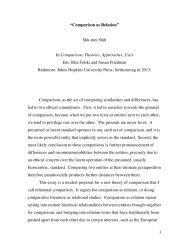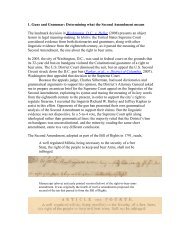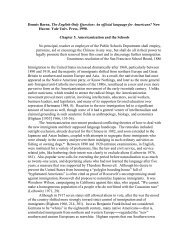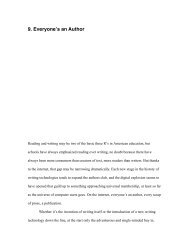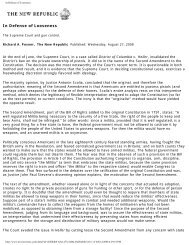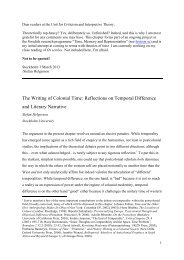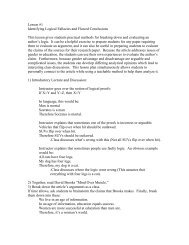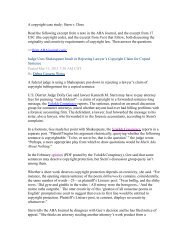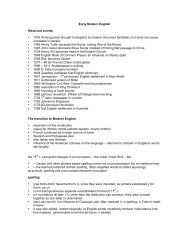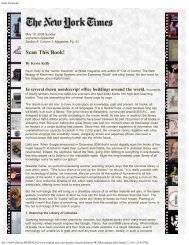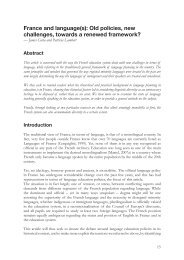It's hard to write a good paper about a bad topic. That's why ... - English
It's hard to write a good paper about a bad topic. That's why ... - English
It's hard to write a good paper about a bad topic. That's why ... - English
You also want an ePaper? Increase the reach of your titles
YUMPU automatically turns print PDFs into web optimized ePapers that Google loves.
Avoiding Plagiarism Rhe<strong>to</strong>ric 105<br />
Incorporating and Attributing Your Sources<br />
Write a new paragraph that corrects the plagiarism in the samples. In your correction, be<br />
sure <strong>to</strong> make attributions—identify the author and smooth the “seams” between your<br />
source’s ideas and your writing. Add in-text and parenthetical citations when needed.<br />
Source: John Culhane, The American Circus, p. 305<br />
At the Cirque Napoleon in Paris in 1859, Jules Leotard presented the first flying trapeze<br />
act. A contemporary account marveled at Leotard’s “reckless breakneck flights from<br />
trapeze <strong>to</strong> trapeze like some tropical bird swooping from branch <strong>to</strong> branch.” In case he<br />
fell, a padded mattress was spread the whole length of the stage. Eventually, the mattress<br />
was replaced by a net…the old-fashioned rope net is the form of protections still used in<br />
the circus. “The net itself can be very dangerous,” said Ti<strong>to</strong> Gaona (a trapeze artist), “but<br />
it’s a circus tradition. Our fans love <strong>to</strong> see us bounce from the net.”<br />
Paraphrased: According <strong>to</strong> John Culhane, the first flying trapeze act was in Paris in<br />
1859. Jules Leotard swung from the trapeze like a tropical bird swooping from branch <strong>to</strong><br />
branch, and audiences ever since have been thrilled by the daring man on the flying<br />
trapeze. To break his fall, “a padded mattress was spread” that covered the length of the<br />
stage. Even though technology has improved, the net is a circus tradition. Ti<strong>to</strong> Gaona<br />
says that fans “love” <strong>to</strong> see them “bounce” from the net.<br />
Source: John Culhane, The American Circus, p. 132<br />
In [P.T.] Barnum’s version, Jumbo laid down his own life <strong>to</strong> save the little clown<br />
elephant, Tom Thumb. Jumbo, wrote the mast publicist, “snatched the little elephant<br />
from in front of the thundering train and hurled the little fellow twenty yards <strong>to</strong> safety.”<br />
After he rescued Tom Thumb, wrote Barnum, Jumbo turned <strong>to</strong> face the oncoming<br />
freight…”Jumbo…gave bun one groan after being struck and then assumed an attitude of<br />
determination and composed himself <strong>to</strong> meet death with a becoming dignity and<br />
fortitude.” Millions of Americans, included those who had never seen Jumbo, mourned<br />
him as if they had lost a beloved pet and preferred <strong>to</strong> accept Barnum’s version of his<br />
death.<br />
Paraphrased: Barnum invented his own version of the death of Jumbo the Elephant.<br />
“Millions of Americans” were saddened by the elephant’s death. They behaved as if they<br />
had lost a beloved pet, says Culhane. Barnum described how Jumbo met his death being<br />
very determined, with a “dignity” that elephants don’t usually have, and fortitude.



